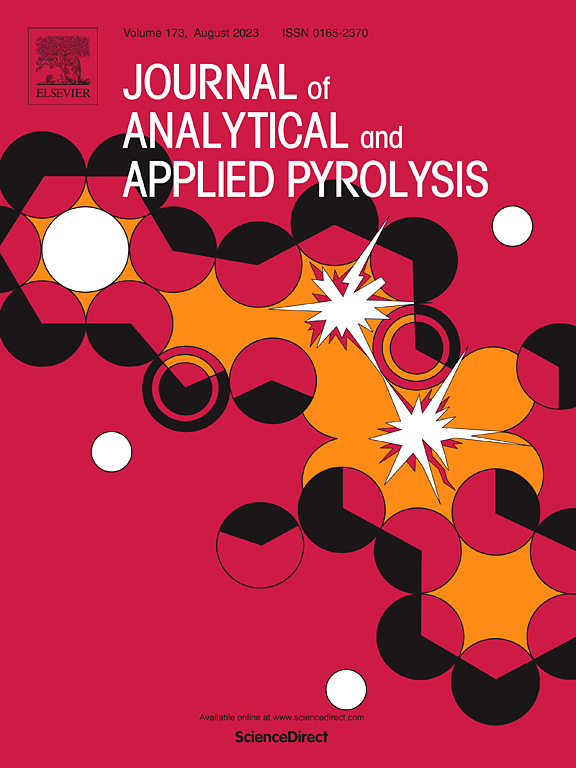Pyrolysis of Co-hydrothermally pretreated LDPE and straw for enhanced bio-oil recovery from agricultural plastic waste
IF 6.2
2区 化学
Q1 CHEMISTRY, ANALYTICAL
引用次数: 0
Abstract
Agricultural plastics improve crop quality, reduce water use, extend growing cycles, and slow the spread of disease and infestations. Despite such benefits, agricultural plastic waste (APW) is poorly managed. To valorize APW, we propose a two-step process in which APW is pre-hydrothermally treated and then pyrolyzed. Hydrothermal processing (HTP) reduces the elemental oxygen and volatile matter present in raw lignocellulosic biomass. Consequently, we hypothesized that co-HTP of low-density polyethylene (LDPE) and straw would produce a bio-oil with fewer oxygenated compounds upon pyrolysis of the hydrochar than pyrolysis of the raw residues. LDPE, straw and a 4:1 LDPE-to-straw mixture were hydrothermally treated at 250 °C and 300 °C. The hydrochars were then pyrolyzed at 450 °C or 650 °C. Co-HTP produced a pyrolysis bio-oil primarily composed of aliphatic compounds and reduced the number of compounds with oxygen functional groups present. Additionally, co-HTP reduced the devolatilization of straw to a single step at 450 °C, reducing the energy required for the pyrolysis process.
共水热预处理LDPE与秸秆热解提高农用塑料废弃物生物油回收率的研究
农用塑料提高了作物质量,减少了用水量,延长了生长周期,减缓了疾病和虫害的传播。尽管有这些好处,但农业塑料废物(APW)管理不善。为了使APW增值,我们提出了一种两步法,即对APW进行预水热处理,然后进行热解。水热处理(HTP)减少了原始木质纤维素生物质中存在的单质氧和挥发物。因此,我们假设低密度聚乙烯(LDPE)和秸秆的共热处理在热解烃类时产生的含氧化合物比热解原料残渣时产生的生物油少。在250 °C和300 °C的温度下,对LDPE、秸秆和4:1的LDPE-秸秆混合物进行水热处理。然后在450 °C或650 °C下热解水合物。Co-HTP产生了一种主要由脂肪族化合物组成的热解生物油,减少了含氧官能团化合物的数量。此外,co-HTP在450 °C时将秸秆的脱挥发减少到一步,从而降低了热解过程所需的能量。
本文章由计算机程序翻译,如有差异,请以英文原文为准。
求助全文
约1分钟内获得全文
求助全文
来源期刊
CiteScore
9.10
自引率
11.70%
发文量
340
审稿时长
44 days
期刊介绍:
The Journal of Analytical and Applied Pyrolysis (JAAP) is devoted to the publication of papers dealing with innovative applications of pyrolysis processes, the characterization of products related to pyrolysis reactions, and investigations of reaction mechanism. To be considered by JAAP, a manuscript should present significant progress in these topics. The novelty must be satisfactorily argued in the cover letter. A manuscript with a cover letter to the editor not addressing the novelty is likely to be rejected without review.

 求助内容:
求助内容: 应助结果提醒方式:
应助结果提醒方式:


